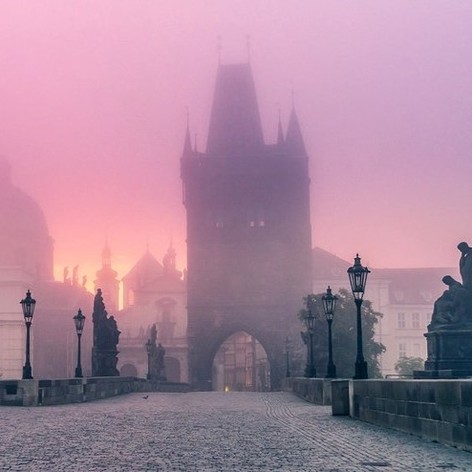


Prague is the capital and largest city of the Czech Republic. It has a long history of over 1000 years, and much to show for. All of the sites listed here are within the historic center of Prague, which has been declared as a UNESCO World Heritage Site. The places listed here are all within a walking distance from one another, but if you're not into walking all day, then the best way to explore the city is using the extensive tramway network. Prague (Praha) is one of the few cities in Europe that was relatively untouched during both World Wars, allowing its historic architecture to stay intact. There are lots of museums, and old buildings with beautiful murals. It contains one of the world's most pristine and varied collections of architecture, from Art Nouveau to Baroque, Renaissance, Cubist, Gothic and Neo-Classical. It also has a lively nightlife, primarily due to the extraordinary range of beers available at very reasonable prices.
Prague has been nicknamed the "city of a thousand spires" for good reason: as you glance over its 1,100-year-old skyline, you'll be rewarded with splendid views of lovely domed churches and soaring old towers that combine to make Prague one of the world's architectural gems. Everywhere you look, fine examples of Gothic, Baroque, Renaissance, and Art Nouveau styles dot the city, providing a dramatic contrast to the sturdy old Prague Castle.Possessing one of the best-preserved historic city centers in Europe, the narrow laneways of Prague's delightful Old Town open up onto spectacular squares, each home to well-preserved historical buildings just waiting to be explored. Must-sees include the famous Charles Bridge over the Vltava River, the splendid Jewish Quarter with its old synagogues, and, of course, the city's many historic churches. This city of tall old towers, domed churches, and weathered alleyways has many tales to tell from history. Bisected by the famous Vltava river, Prague has rightly been dubbed as one of the cultural hubs of Europe. Its medieval buildings done in Gothic, Baroque and Renaissance style attract many visitors every year. People not only love to see the historic buildings in Prague but are also inclined towards exploring the abandoned lanes and natural treasures.




